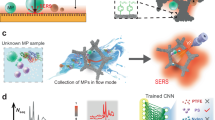Abstract
Recent experimental findings in animals and humans indicate adverse respiratory effects from short-term exposures to particulate air pollutants, especially in sensitive subpopulations such as asthmatics. The relationship between air pollution and asthma has mainly been determined using particulate matter (PM) measurements from central sites. Validated tools are needed to assess exposures most relevant to health effects. Recently, a personal passive particulate sampler (personal Data-RAM, pDR, MIE Inc., Bedford, MA) has become available for studying personal exposures to PM with time resolution at 1 min. The pDR measures light scatter from PM in the 0.1–10 µM range, the significant range for health effects. In order to assess the ability of the pDR in predicting gravimetric mass, pDRs were collocated with PM2.5 and PM10 Harvard Impactors (HI) inside and outside nine homes of asthmatic children and at an outdoor central Air Pollution Control District site. Results are presented of comparisons between the HI samplers and the pDR in various modes of operation: passive, active, and active with a heated inlet. When used outdoors at fixed sites the pDR readings exhibit interference from high relative humidity (RH) unless operated with a method for drying inlet air such as a heater, or if readings at times of high RH are adjusted. The pDR correlates more highly with the HI PM2.5 than with the HI PM10 (r2=0.66 vs. 0.13 for outdoors, r2=0.42 vs. 0.20 for indoors). The pDR appears to be a useful tool for an epidemiologic study that aims to examine the relationship between health outcomes and personal exposure to peaks in PM.
This is a preview of subscription content, access via your institution
Access options
Subscribe to this journal
Receive 6 print issues and online access
$259.00 per year
only $43.17 per issue
Buy this article
- Purchase on Springer Link
- Instant access to full article PDF
Prices may be subject to local taxes which are calculated during checkout
Similar content being viewed by others
Author information
Authors and Affiliations
Corresponding author
Rights and permissions
About this article
Cite this article
QUINTANA, P., SAMIMI, B., KLEINMAN, M. et al. Evaluation of a real-time passive personal particle monitor in fixed site residential indoor and ambient measurements. J Expo Sci Environ Epidemiol 10, 437–445 (2000). https://doi.org/10.1038/sj.jea.7500105
Received:
Accepted:
Published:
Issue Date:
DOI: https://doi.org/10.1038/sj.jea.7500105
Keywords
This article is cited by
-
Within-microenvironment exposure to particulate matter and health effects in children with asthma: a pilot study utilizing real-time personal monitoring with GPS interface
Environmental Health (2016)
-
Biomass smoke in Burkina Faso: what is the relationship between particulate matter, carbon monoxide, and kitchen characteristics?
Environmental Science and Pollution Research (2014)
-
Feasibility intervention trial of two types of improved cookstoves in three resource-limited settings: study protocol for a randomized controlled trial
Trials (2013)
-
Validation of continuous particle monitors for personal, indoor, and outdoor exposures
Journal of Exposure Science & Environmental Epidemiology (2011)
-
Infiltration of forest fire and residential wood smoke: an evaluation of air cleaner effectiveness
Journal of Exposure Science & Environmental Epidemiology (2008)



